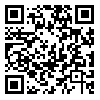BibTeX | RIS | EndNote | Medlars | ProCite | Reference Manager | RefWorks
Send citation to:
URL: http://jrsm.khu.ac.ir/article-1-2471-en.html
2- Tarbiat Modarres University
3- Tehran University
In the recent years, adventure sports have been growing increasingly. Adventure sports are new and appealing activities that regularly include some kinds of physical and mental challenges and relative presence of natural environment. These activities are presenting new paths and sometime they called as a serious competitor for mainstream sport. The aim of this study was to present a paradigm for adventure sports development. The qualitative methodology used in this study has followed an interpretive approach that was achieved by grounded theory. Data was collected from literature, interviews, focus groups, adventure sports related documentary films and movies. Results of this study are presenting adventure sports paradigm. In this paradigm developmental causal conditions of adventure sports, contexture of adventure sports, existing intervening conditions and contextual conditions, strategies and tactics for developing adventure sports and finally consequences. To appropriate recognition and encountering with this field, that most probably will be one of the main part of sport, we suggest doing more scientific research, especially with futurology approaches.
Received: 2017/04/18 | Accepted: 2017/09/3 | Published: 2020/08/31
| Rights and permissions | |
 | This work is licensed under a Creative Commons Attribution-NonCommercial 4.0 International License. |








